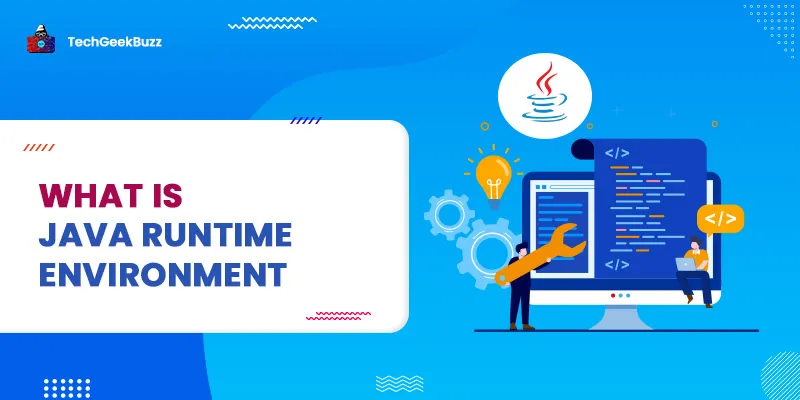Java is one of the popular programming languages of 2022. It is a platform-independent programming language. This means the same Java code can be compiled and executed on any system without making any changes in the source. However, there is a catch to it. To run and execute Java code, we require some tools such as Java Virtual Machine (JVM), Java Runtime Environment (JRE), and Java Development Kit (JDK).
All these three tools are platform-dependent tools. Using these three tools, we can create a Java program and execute it. So, for a Java developer, it's necessary to have these installed before compiling and executing any Java code or byte code. Among the trio, JDK and JRE are software, whereas JVM is a concept. Thus, we cannot install JVM separately.
Note : JDK is a combination of JRE and JVM. Therefore, when we install or download JDK, it includes a compatible version of JRE, which contains the default JVM.
What is a Runtime Environment?
A runtime environment is a software that provides an environment to execute and run specific code. The runtime environment loads all the necessary files and makes sure that the program gets enough memory and other resources from the system while it runs.
Programming languages like C++ and C do not have any specific runtime environment. They depend on the operating system for all the memory and resource allocation. However, programming languages like Java use a runtime environment.
What is Java Runtime Environment (JRE)?
Most high-level programming languages depend on the OS for a runtime environment, but this is not the case in Java. When we discuss the different layers in systems, which include hardware and software, the runtime environment resides in the computer's operating system. Now, let’s talk about Java Runtime Environment (JRE).
JRE is a software that is a part of the Java Development Kit and executes the compiled code of Java source code. JRE makes sure that Java code runs on every system without making any changes in the source code. JRE provides many features, and memory management is one of the important ones.
In this, users do not have to control memory allocation and deallocation of the software. All is done by Java Runtime Environment. In a nutshell, Java Runtime Environment is a Java-specific software that is designed to run Java programs. It contains many class libraries, a java class loader, and a Java Virtual Machine (JVM) . Classloader helps to connect the core Java class libraries with currently loading classes.
Java virtual machine is a virtual machine that helps to provide necessary resources to the Java application so that the program can run. JRE combines all the resources and concepts that are required to run the Java byte code.
Note: JDK = JRE + JVM (Software) JRE = JVM + Class loaders (Software) JVM = Java Interpreter + Threading + Garbage Collection (Virtual Machine)
Working of JRE with JVM
Java virtual machine is responsible for executing Java programs. JRE consists of JVM along with some libraries. It is software that takes the Java code and combines it with the required libraries so the Java Virtual Machine can execute that code. This means JVM executes the code with the help of an interpreter. If we look at the complete working Java framework of JRE:
- It grabs the compiled code from memory,
- Loads that compiled Java code into the main memory, and
- Connect it with the appropriate Java class libraries so that the Java Virtual Machine can finally execute it.
Installing JRE
When we install Java or Java Standard Edition , we do not have to install JRE separately. Java SE comes with a complete package that consists of the JDK with an appropriate and compatible version of JRE. The Java code becomes platform-independent only if that system has a Java development kit with a compatible version of JRE.
Conclusion
JRE is a part of Java JDK, and it is software that our system must have if we want to run a Java application. While installing any edition of Java, whether it is Standard or Enterprise, they all contain a Java Runtime Environment with the proper Java Virtual Machine. JRE includes all the core Java class libraries, class loaders, and a Java Virtual Machine.
People are also reading:





Leave a Comment on this Post